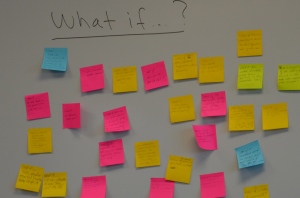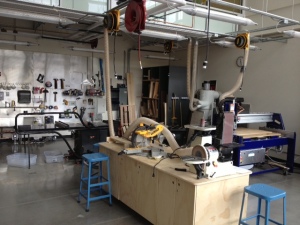 One of the pleasures of research is to observe longitudinal change; revisiting a school from time to time provides that window. It was my pleasure to visit the campus of Colorado Academy for the third time in just over a year, and to see evidence of some of the courageous decisions they have made about transforming a successful school of the past into a successful school of the future.
One of the pleasures of research is to observe longitudinal change; revisiting a school from time to time provides that window. It was my pleasure to visit the campus of Colorado Academy for the third time in just over a year, and to see evidence of some of the courageous decisions they have made about transforming a successful school of the past into a successful school of the future.
In the morning I was honored to share some of my work with parents and school leaders. In turn, through a short post-up activity, the audience shared some of their dreams, wishes, and ideas of how their school, or any school, can better serve the needs of our students. I’m pretty sure that every parent in the morning audience is darn happy their child has the opportunity to attend a great school like CA, but they are also willing to ask some hard questions about the future sustainability of the basic school model.
Having added my voice to their discussion, I got to spend most of the day poking around some of the programs that are leaning forward at CA. Last year they opened a beautiful new Upper School classroom building that blends sustainable practices and operations. In rethinking the nature of learning space, they came up with places like the Innovation Lab, a futuristic version of the old workshop, a makerspace/classroom full of electronic equipment and 3D printers, but also hammers, handsaws, and scrap wood. CA offers an elective course to 11th and 12th graders in the Innovation Lab, and the students told me that through the design and manufacture of simple objects they are learning the skills of “time and project management, team-based communication and collaboration, and flexibility and adaptability. We have to make corrections on the fly when things don’t go right.” In one project, the older kids collaborated with 5th grade “clients” to design furniture for the future learning spaces of the lower school.
The Innovation Lab is open to any creative student on campus. One 10th grader showed me the robotic hand he built on the 3D printer, programming an actuator glove that controls each finger of the hand. He did all the work on his own time…because he wanted to. He told me that he “could have done most of the work in an off-campus maker space, but it costs $60 an hour, and at that price I could not afford to try and try again, to get it just right.” Another 10th grader has been accepted into a Harvard incubator program for high school students for his invention that combines light switches with a reminder note board.
https://www.youtube.com/watch?v=6M4nA1T6xHU#t=1
I sat in on teacher Paul Kim’s new 9th grade class, Global Perspectives in the 21st Century, which replaced a legacy class on the history of the American West. I interviewed the students about this ground-breaking approach to learning history and culture through a student-owned, design thinking lens. Here are some of their comments:
We have been doing history our whole school career by learning about the sequence of events. Now we are looking at it by how people think.
History is normally written from a certain perspective; in this class we are getting multiple perspectives.
Mr. Kim does not give us specific instructions. He gives us a general outline or direction. What is important in this class is the thought process and we don’t try to make an exact replica of another project.
I am learning to think for myself. We learn to not just go to Google for the answers but to look other places.
…and this priceless testimony, one of those that makes a teacher’s life worthwhile…
It really screws me up in other classes where there are black and white answers.
Organizations change either because they have to or because it is the right thing to do; CA took the later path. They have embraced design thinking as a learning strategy for both adults and students and are in the process of embedding it across the curriculum. They are working intentionally on the skills needed to build a culture comfortable with growth and change. They know enough to know they are not finished with these processes, and in fact that they will never be finished. That is what defines an innovative organization.



Leave A Comment